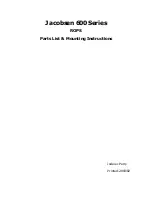
Safety Instructions
R&S
®
QAR
8
User Manual 1178.7200.02 ─ 04
Installing cables
A R&S
QAR installation consisting of the R&S
QAR, monitor and transmitter module
requires cable connections (power cables, LAN cables etc.). Make sure to secure all
cables on the floor and cover them up.
Loose cables are a tripping hazard. Tripping on cables can cause physical injuries.
Properly covered cables also minimize the risk of cable damage.
Supplying the R&S
QAR with power
Always complete all connections (LAN, USB etc.) before connecting the R&S
QAR to
the power supply. Otherwise, the R&S
QAR can get damaged.
You can connect the R&S
QAR to the power distribution system normally used to sup-
ply energy-consuming equipment, such as household appliances and similar loads.
Electrically powered products have risks, such as electric shock, fire, personal injury or
even death.
Take the following measures for your safety:
●
Only use the power cable delivered with the R&S
QAR. It complies with country-
specific safety requirements. Only insert the plug into an approved grounded outlet.
●
For components that need an external AC adapter, only use the one that is deliv-
ered with the components.
●
Only use intact cables and route them carefully so that they cannot be damaged.
Check the power cables regularly to ensure that they are undamaged.
●
If the voltage or frequency is higher than 230
V or 50
Hz, the leakage current of the
R&S
QAR can be above the limits. In that case, a protective ground connection
must be established for each panel before connecting them to the power supply.
●
Only connect the R&S
QAR to supply networks with a fuse protection of maximum
20
A.
●
Ensure that you can disconnect the product from the power supply at any time. Pull
the power plug to disconnect the product. The power plug must be easily accessi-
ble.
Meaning of safety labels
Safety labels on the product warn against potential risks.
Potential hazard
Read the product documentation to avoid personal injury or product damage.
Electrical hazard
Indicates live parts. Risk of electric shock, fire, personal injury or even death.
Protective conductor terminal
Connect this terminal to a grounded external conductor or to protective ground. This protects
you against electric shock should an electric problem occur.









































